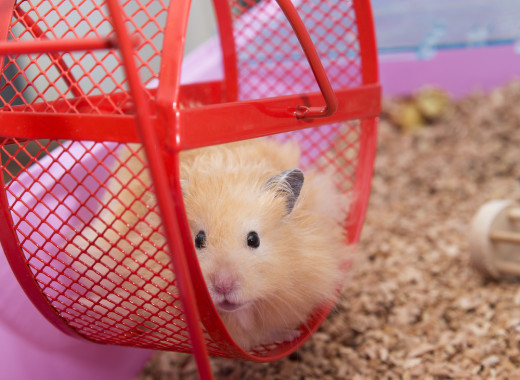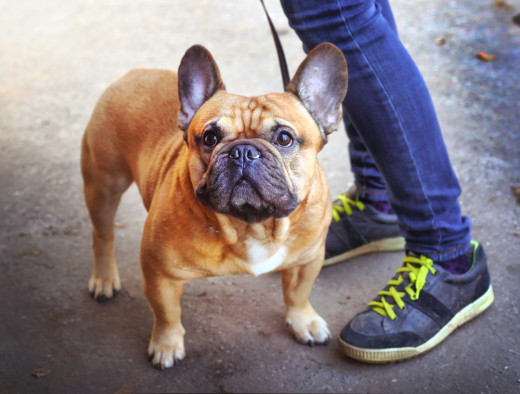
When I first noticed that Steve Jobs, Barack Obama, and Mark Zuckerberg are almost always seen in the same clothes, I wondered why these powerful and wealthy people (globally influential to the nth degree) didn’t seem to buy new clothes. Clearly, it wasn’t about affordability. There simply had to be some logical explanation.
In my quest for the truth, I read Willpower: Why Self-Control is The Secret to Success and discovered the concept of precommitment.
The puzzle was solved! It is a simple concept designed to eliminate decision-making when your energy is depleted. It’s an efficient way to preserve energy and prevent procrastination and irrational decision-making.
So when you see President Obama or Mark Zuckerberg wearing the same outfit repeatedly, the reason is way more complex, and simultaneously simple, than you expected. It simply doesn’t waste time and energy on irrelevant things like choosing clothes. Instead of worrying what to wear, they conserve their energy for more complex decisions that can affect millions (if not billions) of people.
Simply put: they save their decision-making energy for more important decisions.
According to John Tierney, everyone, irrespective of employment, income level and social class, suffers from “decision fatigue”.
This is a psychological condition caused by the large amount of decisions made, which leads to a mental exhaustion where a person has run out of energy to make the right/beneficial decision. Unfortunately, decision fatigue is not simply going to disappear.

With rapid technology advancement and numerous of products being created everyday, we’re bombarded with never-ending opportunities and choices for every aspect of our lives. Today we make more decisions that humans have ever had to so we need a plan of action.
Think of going on a decision-making diet
What is a decision-making diet? It’s essentially a simple concept of optimising your lifestyle to conserve some energy to make better decisions and live life to the optimum.
The decision-making diet consists of goal setting, script writing, environment designing and habit monitoring. In this article I’ll share some findings from behavioral scientists and psychologists as well as personal experiences optimising my lifestyle.
1. Define your vision
First of all start with an end goal – what is it that you want to achieve? What is your vision? Or, as Simon Sinek, author of “Start with Why” would say, start with the purpose, start with why. Apply the golden circle to shape your vision and reverse engineer what has to be done from there.
2. Live vs. scripted performance
Daily decision-making processes can be compared to a live improvisation show with a well-executed performance taking everyone’s breath away.
If you just walk onto the stage, get clues, constraints and options and you choose how to go about it on the way, such improvisation can be fun and entertaining. It sadly can also lead you somewhere you don’t want to end up.
In contrast, if you want to really nail it on stage and show your best self, you need a perfectly written script, and of course, numerous rehearsals to ensure your performance is electric. You may have caught the key word here, the script.
Let’s see how you can go about it to ensure that your role and performance are as perfect as they can be.
After you’re clear about where you want to go, write down the script of your daily performance. That leads to your goal and brings you closer to making your vision come true.

Write down your personal daily plan. Include things that you do daily and also what you’d like to do: things like the time you wake up, when and what you eat, what morning rituals you want to perform, what you wear, how you get to work, what you do when you commute, and what happens once you’re at work.
Also, some decision-making situations that you are often faced with e.g. how do you respond to offers for lunch if you’re busy? How do you respond to urgent tasks? How do you respond to an invitation to go for drinks after work? The more situations you cover the better.
Writing the script can be treated as habit stacking, which essentially means adding a new habit on top of an existing one and making it easier to execute as it will be tied to a habit that has been performed numerous times before.
To start using the habit stacking and preparing your script use the following template:
“After [CURRENT HABIT], I will [NEW HABIT]”
As an example, below are my morning habits I’m developing at the moment.
- After I wake up, I will drink two glasses of water.
- After I drink water, I will stretch for five minutes.
- After I stretch, I will eat a healthy breakfast.
- After I eat, I will meditate for 30 minutes.
- After I meditate, I will read 10 pages.
- After I read, I will write 500 words.
- After I write, I will plan the day and define the MIT (most important task).
- After I plan the day, I will do the affirmations.
- After I do the affirmations, I will visualize and imagine doing the tasks.
- After I visualize, I will work on the MIT.
- After the MIT, I will exercise for an hour.
- After I exercise, I will practice faster typing for 15 minutes.
- After I practice typing, I will study a language for 15 minutes.
Habit stacking works like magic just because you base it on the current habit, eventually your habit order becomes a habit too, leading to more willpower saved and more energy throughout the day.
If you need an inspiration for your daily script or habit stacking, check My Morning Routine, which features inspiring morning routines from artists, writers, athletes, entrepreneurs and high achievers.
The power of the default choice
When you’re faced with a challenge and need to make a decision, your brain starts to look for the easiest way to do it. Frequently, you just choose the default option.

Because you don’t know your preferences for new things, you’re extremely sensitive to the external influences. That’s the reason why defaults, the particular options that are presented to you, are so persuasive. Dan Ariely’s, the author of “Predictably Irrational”, who delivered a brilliant TED talk, explains a concept of how people tend to fall back on defaults. Deciding is too energy demanding, so people most often would not decide and choose the default option rather.
To avoid irrational decisions when you are suffering from the decision-fatigue, your script and written precommitments will help you make smarter decisions you won’t regret.
3. Environment design
Once you have the script, it’s about the time to make it easier for you to perform and make it into autopilot. As James Clear calls it, work on your environment design and make sure it contributes to your success rather than stops you from achieving what you really want to do.
Plan your day the night before. Making a plan and prioritising eats your decision-making energy, you don’t want to start a new day and waste your most precious decision-making force to thinking about your day and prioritising your tasks.
Eat your breakfast. According to Roy F. Baumeister, the simplest way to gain willpower is to eat something. Willpower is powered by glucose. When you eat something, the body converts it into glucose energy for your body to use. For a quick boost, the fastest way to refill your glucose levels is to eat sugar or other fast-digesting carbohydrates.
Make crucial decisions in the morning. After you had plenty of sleep and replenished your willpower energy with food that can be converted into glucose you have the highest capacity in the day to tackle complex tasks that require your creative, analytical and decision-making abilities.
Plan non-creative and robot tasks for later in the day. No matter how well trained you are, how much sugar you eat, your brain will get tired from mental work and you will hit your decision-making limit. When you’re low on willpower energy focus on the mundane tasks that don’t require much thinking like watering plants, walking the dog, washing dishes, answering e-mails, and data entry tasks.

Utilize to-do lists. We’re living in the age of to-do lists, but not everyone uses it the right way. Look at to-do lists as scripts for certain situations. I have a procrastination to-do list, for example, which lists all of the interesting things I can do when I don’t feel like working, like organising my photos, learning a language or cleaning up my inbox.
Say “no” more often and limit commitments. Default to saying “no” to any new arising opportunity which doesn’t contribute directly to your defined vision. It’s easy to give in on feelings and emotions of glamorous-looking offers, but it will simply overload your current already busy schedule with more decisions.
Remove obstacles. In order to make your daily life easier remove the unnecessary decisions to be made like what to eat, what to wear, where to go, prepare everything in advance. If you are distracted by the TV, get rid of it or move to another room to work. I increased my water intake by putting a two-liter water bottle next to me instead of having a glass that had to be refilled every now and then.
4. Monitoring
The last part of the decision-making diet is monitoring.
Since every person has a personal lifestyle, unique and constantly changing, what works for you might not work for me. That’s why it’s important to monitor your behavior.
A research study conducted at Duke University shows that nearly half of our actions are habitual, which means they are made on autopilot or in other words, mindlessly.
To build or break the habit you will need to monitor yourself and increase self-awareness to make notes of what triggers you to do one or the other thing. It’s important to note what rewards you seek and how you feel after you get it.
Practice mindfulness. When I attended a 10-day silent meditation retreat, I discovered that mindfulness is about bringing awareness to the present moment. Being present helps you better understand your behavior and consequently, you make better decisions. I’ll give you a quick example you can relate to.
You know that uncomfortable feeling when you lock the door, leave for work and need to come back after two minutes just to check if the door is locked? You have this feeling because your consciousness doesn’t register it as complete because it’s made on autopilot.
A simple solution to this problem is to bring mindfulness. Next time you’re locking the door, slowly lock the door and repeat three times, “I’m locking the door,” “I’m locking the door,” “I’m locking the door.” After it’s locked, make a conclusion “I’ve locked the door.”

To start practicing mindfulness and meditation, I recommend trying one of the following apps: Insight Timer, Headspace, Calm, OMG. I Can Meditate! and Omvana. Once you are more aware of your feelings, impulsive decisions and cravings, note it down, then analyse and rewrite your script. Thus, you will evolve into what you wish to be.
Track and measure. We’re living in the golden technology era in which millions of apps, wearables and nearly unlimited access to the internet is empowering humans to potentially become the best generation that ever lived. However, there is the danger that with such stimulation available, we can get too easily distracted. The need to manage ourselves in such a world is more urgent than ever.
What gets measured gets managed. – Peter Drucker
Start tracking your habits and behavior to increase your willpower awareness and optimise your lifestyle for making better decisions. From personal experience of experimenting with logging habits, I recommend a habit tracking tool called Coach.me which allows you to track your habits, set goals, even hire a coach for a specific goal you’re trying to achieve.
Some other tools you may want to try are Habit List, irunurun, Strides, Lifetick, GoalsOnTrack, Balanced, Logsit, Momentum, and Habitica.
Conclusion
No diet in the world works if you seek quick results.
Strive for a better lifestyle and optimise your daily decision-making process to reach your personal or professional goals and ultimately live a life with less stress and more energy and focus on the things that make your life story worth telling.
Get the TNW newsletter
Get the most important tech news in your inbox each week.





